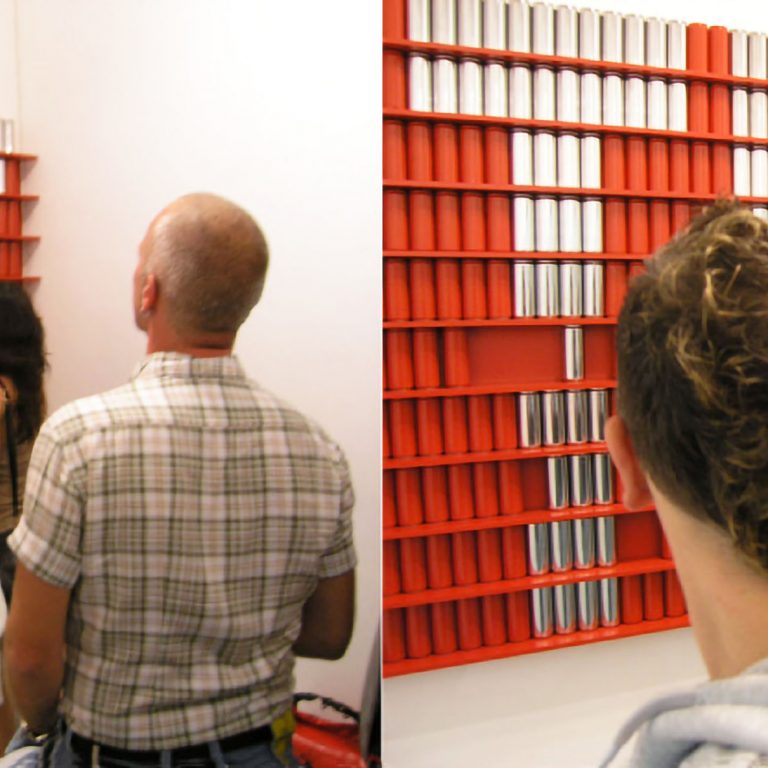Künstlerhaus Bethanien, Berlin, 2006. Action – Installation. Wood, acrylpaint, 550 drink cans, 150 x 330 x 10 cm.
Info
One of the most relevant concepts used to define the 20 century, and certainly also the first decade of the 21 century is consumerism. In many ways it affects almost all aspects of our contemporary society.
The “Dyadic Condition” is a comment about this phenomenon while displaying its mechanisms in a direct way. The work is based on the use of colours as a way to seduce the spectator. The colour red was not selected at random; instead, it has a specific purpose. This colour is present in the everyday unconsciousness of modern consumers.
The consumer society reacts from the fundamental production of emptiness which causes the individual to cyclically feel the repeated need to consume. This occurs, however, in an undefined time - space, “Dyadic Condition”, poses the question: how can I show the “process of change” in the values and desires of an individual in a physical space which is also confined in time?
The installation consist of shelves that subtly situate the spectator in a supermarket. On the shelves are 550 beverage cans which have been previously altered. The brand name has completely removed or covered in varnish. They organised in that they constitute a specific form, and, when seen from a distance, the word ETHIC can be discerned.
The primary intention of this piece is to simulate and invite the spectators to consume, establishing a dynamic in which every time the participants take one of the cans to drink, they create an empty space on the shelf thus gradually decomposing the word ETHIC.
The experiment simulates how consumer mechanisms function and, by means of the emptiness created through the participatory act, establishes a dyadic relationship with the consumed products.
This work accelerates these mechanisms of consumption, allowing the participants to experience this process in a direct way. When the word ETHIC disappears, we are faced with the emptiness which follows an unrestricted experience of consumption. This is accentuated in this piece because the labels are not visible to the spectators and therefore they cannot make a conscious choice.
This work simulates not only the emptiness of consumption but, at the same time, also imitates this mechanism of vacuity. Like consumer society, the success of the installation depends solely on the consumer/spectator. Without consumer there is no consumption and without spectator there is not installation. This is the principle of a dyadic relationship where each component is utterly dependent on the other.








